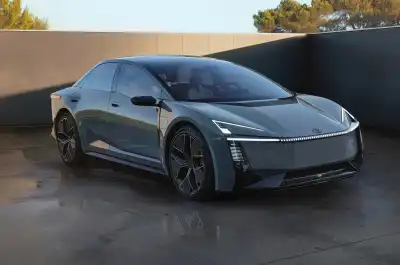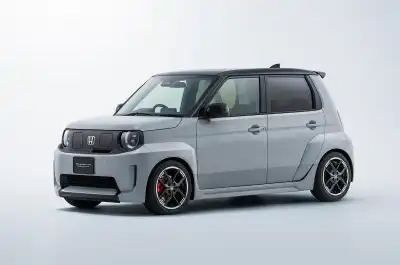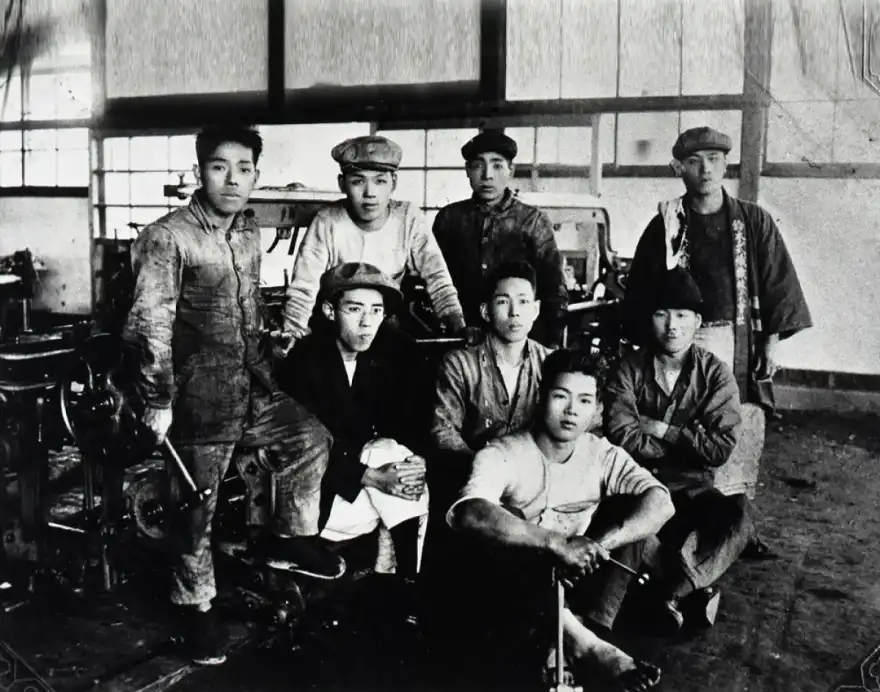
Last year, the Japanese company celebrated its 100th birthday. But as we know 2020 was a year to forget, so the celebrations are getting underway a year later for the company and we were given the opportunity to see some of the extensive products up close and personal.
The story began back in 1920 when Michio Suzuki started the business with the manufacturing of textile looms which proved extremely popular until the early 1950s when there was a global decline in the cotton industry.
However, riding his pedal cycle in strong head winds one day, Shunzo Suzuki realised he could make his daily journey much easier by designing his own simple motor assisted cycle. So, with his R&D team, he demonstrated the ‘Power Free’ 36cc motorcycle in 1952 which went into production that same year.
Power Free was simple in design, offered very easy maintenance and was unique at that time as it could be ridden fully motorised, partially motorised or by using the pedals without any engine assistance.
With the ongoing success of Power Free, Suzuki began to develop a more powerful engine and the second model to debut was named Diamond Free that went on sale in 1953. The 60cc 2hp engine was more powerful than its competitors and sales were strong from the outset. In the Autumn of 1953 production volume largely exceeded expectations achieving 150 per cent of the projected production. By then, Suzuki was building 6,000 motorcycles per month.
And the company later went on to develop the legendary GSX1300R Hayabusa that wowed the two-wheeled world when it was launched in 1999.
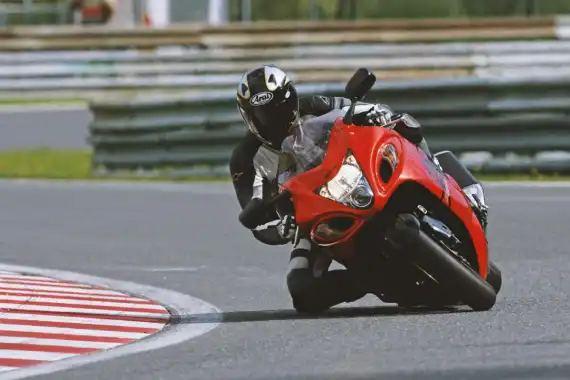
The design brief was simple; wade into the hyper sport motorcycle market and come out on top. The new Hayabusa (which translates to peregrine falcon, a bird of prey which has a top speed dive of 200mph and preys on blackbirds), did just that.
Styled and designed to a purpose, the Hayabusa made an impression the moment you saw it, with its flowing lines aimed at making it as aerodynamic as possible, allowing it to cut through the air with ease. And at the launch in Spain, every superlative imaginable was thrown in its direction, with the assembled press running out of ways to describe just how jaw-dropping it was.
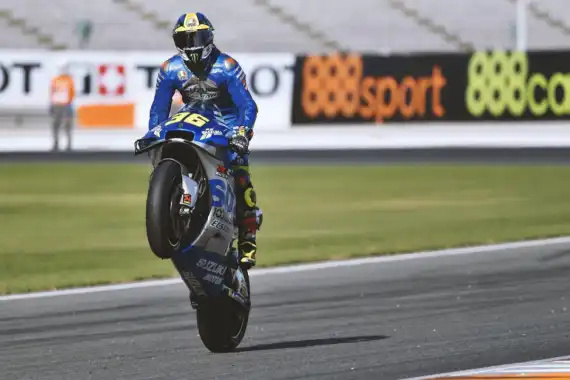
It was immediately heralded as the fastest production bike on the market. At the launch, top speeds were clocked at the same point on the track as they were for the 500cc GP race the year before, with the Hayabusa just five miles an hour slower than the quickest prototype racer of the day - and it wasn’t flat out. To cope with the power, Bridgestone developed a set of brand-new tyres, the BT56J, which gave the Hayabusa a greater contact patch when leant over and greater stability at high speed.
Suzuki test rider, Yuichi Nakashima, said of the first Hayabusa, “I can say the Hayabusa’s engine feels so overwhelmingly powerful and finely tuned that there is nothing like it. After riding it, you won’t want to ride another motorcycle. Just once experience the Hayabusa’s powerful acceleration from low to high speeds and its nimble handling and you too will be hooked.”
And while all these two-wheeled developments had been gaining momentum, Suzuki had already begun development of its first car. This started in 1937, but these plans were shelved due to the outbreak of World War II. When research and development finally resumed in 1954, Suzuki Motor Co Limited was formed.
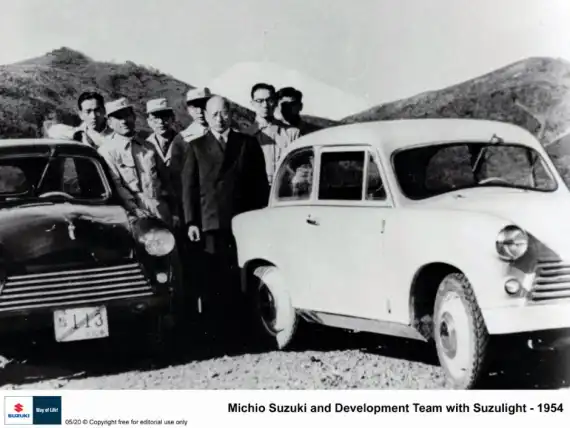
And shortly afterwards the Suzulight – a compact vehicle weighing just over 500kg and powered by a 360cc 15PS two-cylinder engine, two-stroke engine - was launched.
During the testing process of the prototype, it was driven on a 300km trip across the Hakone mountains between Hamamatsu and Tokyo which proved challenging on roads that had not yet been paved. Although arriving very late in the evening, the team managed to present the car to the President of ‘Yanase Auto’ Japan’s leading authority on Automobiles.
The President had stayed on late to greet the team and made his way out to thoroughly test the car. Several hours later he returned very impressed and immediately gave Suzuki full approval to put the Suzulight into production. It was way ahead of its time with independent coil spring suspension and rack and pinion steering.
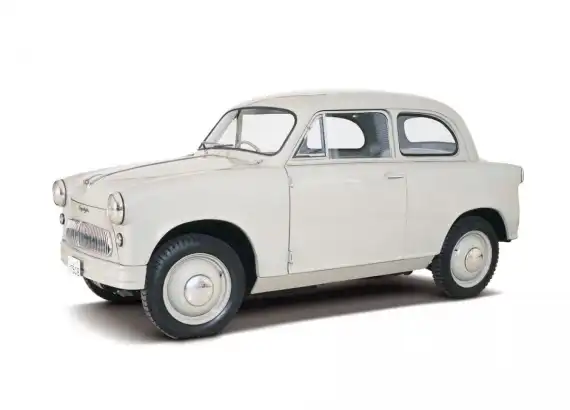
Production commenced in October 1955 with initial production of three to four cars per month, but by early 1956 monthly volume had climbed to 30 units.
Following further development, the Suzulight Fronte FEA was unveiled in March 1963. Immediately after its launch, the Fronte appeared in the first Japanese Grand Prix winning 1st, 2nd and 4th places in the mini vehicle category.
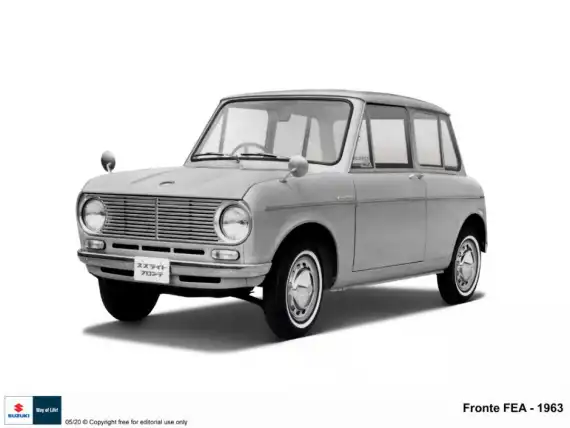
On 12 August 1968, a driving test was conducted on the Autostrada del Sol to prove the high-performance capabilities of the recently launched Fronte SS. World-famous racing driver Stirling Moss was chosen along with Mitsuo Ito, Suzuki’s own motorcycle rider who had won the Isle of Man TT 50cc class in 1963 and was the first Japanese Rider to have ever won a TT.
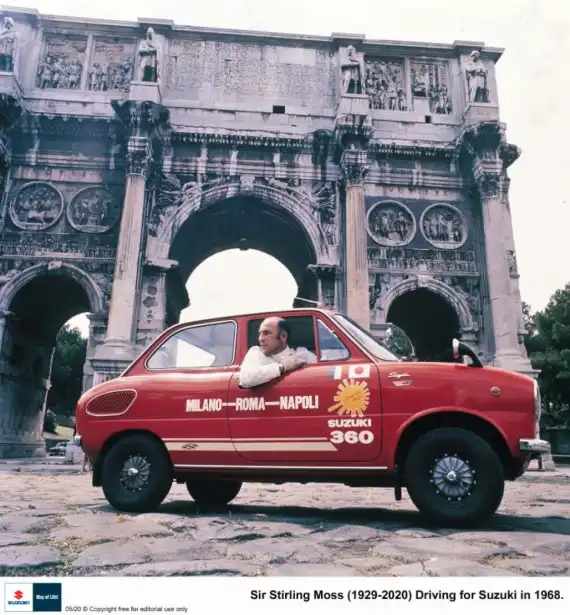
The Autostrada del Sol spans 462 miles from Milan to Naples and had no speed limits at the time except on bends or in tunnels. Moss and Ito arrived at their first transit point in Rome and the news that "Suzuki's mini-car had driven the 338 miles from Milan to Rome in four hours and 27 minutes at a remarkable average speed of 77mph” quickly became global news.
Then, they started towards Naples and drove the entire route at an average speed of 75mph, amply demonstrating the high performance and endurance capabilities of the new car and with an engine capacity of just 360cc, power output of 25PS and a kerb weight of only 420kg.
But Suzuki never rested on its laurels and wanted to expand further by looking to the water for another area for development.
Not surprising then that the Outboard motor was launched in 1965 with a one cylinder, 5.5hp engine. Today, more than 30 different types are offered, ranging from the DF2.5 right up to DF350 with its 3.4-litre V6 engine offering 350hp.
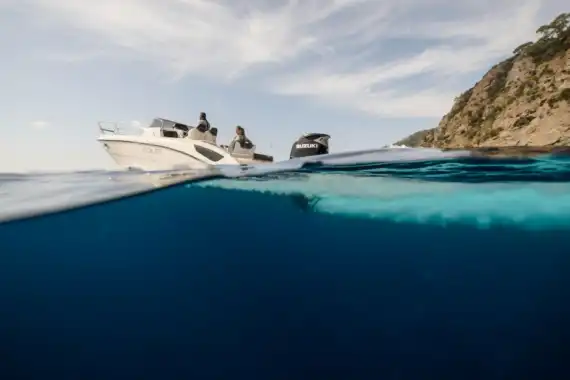
We are constantly reminded how polluted our oceans have become and last year, Suzuki launched a ground-breaking micro plastic collecting device for its engines which finely filters and cleans sea water as it travels along whilst cooling the engine at the same time, essentially reducing damage to the environment and helping protect sea life. Clever stuff.
Mark Beeley, Head of Marine & ATV for Suzuki GB, said: “This ground-breaking development is part of Suzuki’s continuing determination to devise innovative solutions that mitigate the serious impact of plastic waste on our natural environment. It marks the first time in marine industry history that an outboard motor cooling system has been utilized to extract micro-plastics from the seawater.”
And finally, for now at least, there is yet another side to the Suzuki name that people may not be aware of and that’s the development of the first Suzuki All-Terrain Vehicle (ATV) or Quad Bike launched in 1982 before any of its competitors.
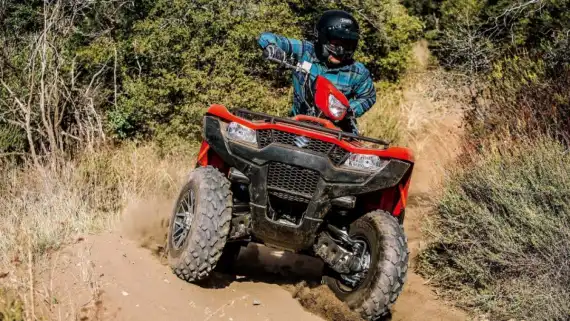
Today Suzuki’s range currently comprises of three versatile models; the KingQuad 500 and 500XP as well as the KingQuad 750XP (XP denotes power steering). These robust utility ATVs are the culmination of years of refinement and their high levels of technical specification and ease of handling make them suitable for a variety of applications including hill and lowland farming, estate management and use on equestrian properties.
So, it’s overwhelmingly evident that there are many strings to Suzuki’s bow and now, 65 years since the delivery of its first car, the company remains globally renowned as the ‘small car experts’ and produces three million vehicles per year.
Michio Suzuki’s original strategy of the design and production of lightweight vehicles lives on with platforms introduced for Ignis and Swift. For example, the latest Swift Sport Hybrid weighs in at just 1,025kg.
And 2020 was also another very important milestone for Suzuki as it celebrated the 50th Anniversary of its 4x4 models since the launch of its lightweight and ‘go anywhere’ LJ10 Jimny and the first Vitara model was introduced in 1988. Today, six models in the range have 4x4 capability optionally available which is unique in the industry.
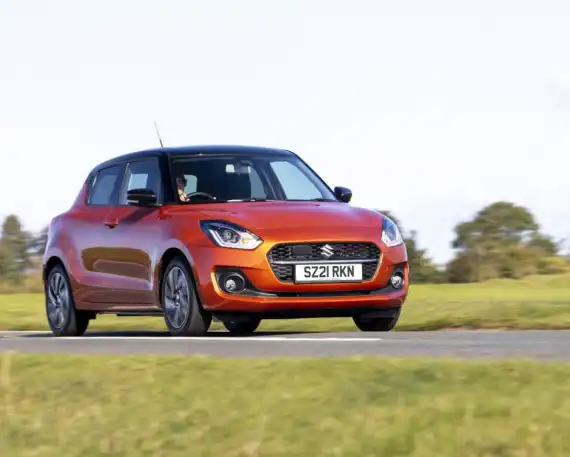
Today’s line-up consists the 1.2-litre hybrid Swift – a compact supermini in its third generation. The car underwent a facelift for 2021 with a new 1.2-litre enhanced Hybrid engine as well as further standard specification upgrades. Other Suzuki cars on sale include the Ignis, Swift Sport, Vitara, S-Cross, Swace and Across. The Jimny is being launched in a commercial format so will be of huge interest to business drivers.
Suzuki cars are generously equipped with all the mod cons and, depending on the model, feature Apple CarPlay and Android Auto, a 3D navigation system, plus a comprehensive list of safety kit with the likes of dual-sensor brake support, lane departure warning, blind spot monitoring, rear cross traffic alert, traffic sign recognition and Suzuki’s impressive ALLGRIP 4WD system.
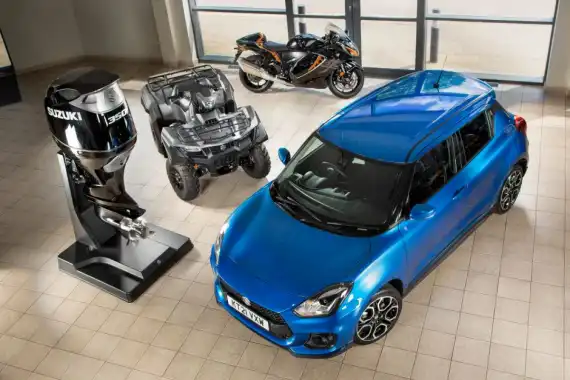
And Suzuki is committed to continuing its highly-successful alliance with Toyota following the launch of the Suzuki Across and Swace models.
So, it would certainly be fair to say the last hundred years have been an exciting time for Suzuki. Who could possibly guess what’s in store during the next hundred?

